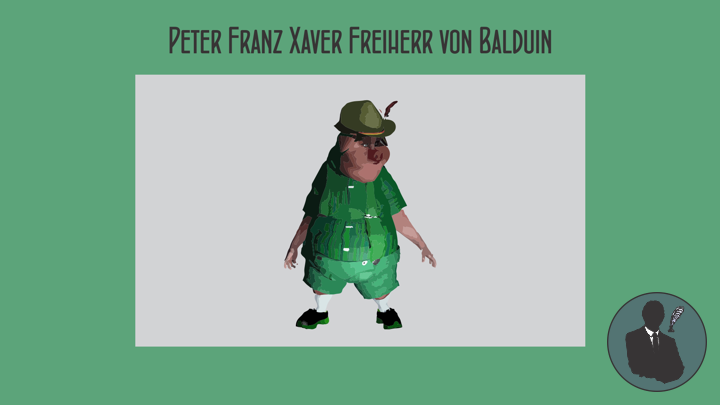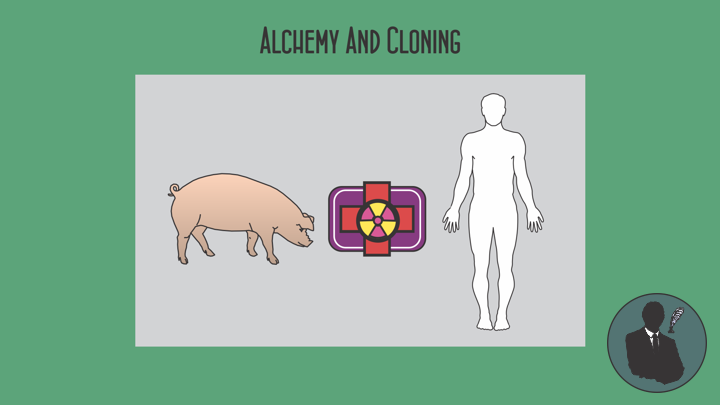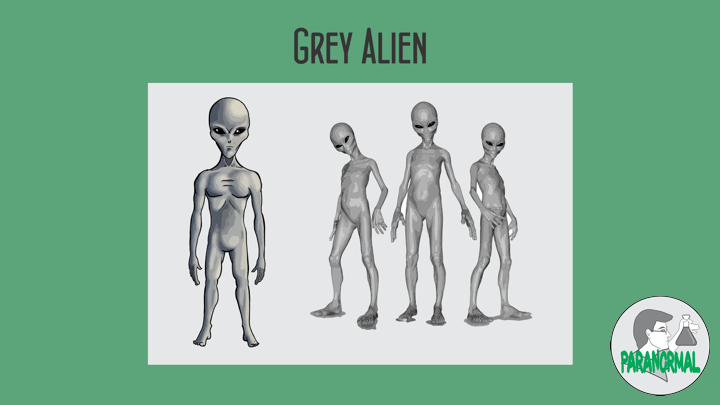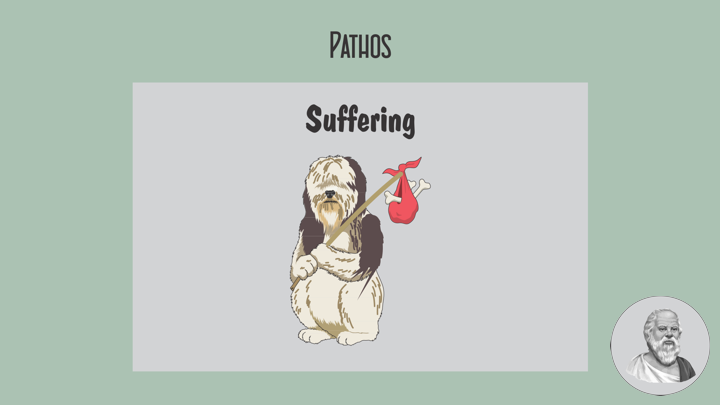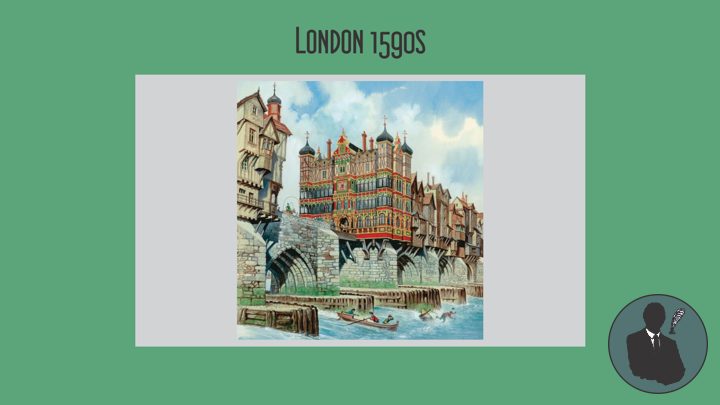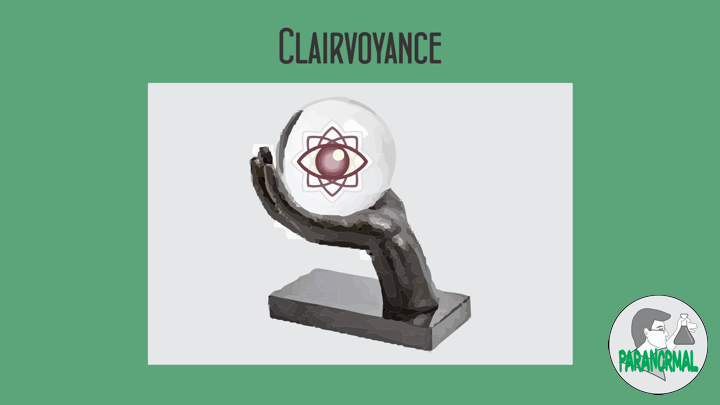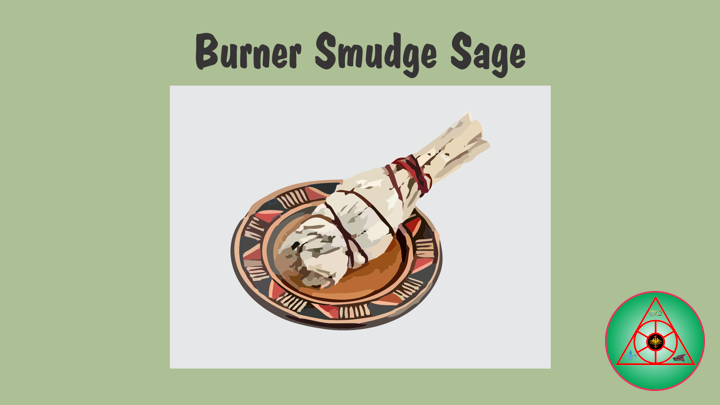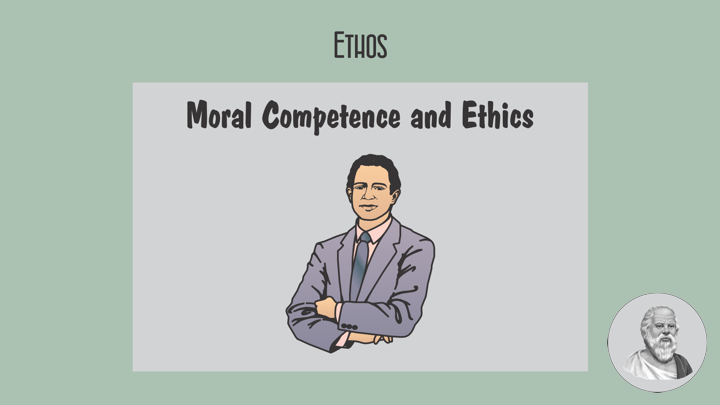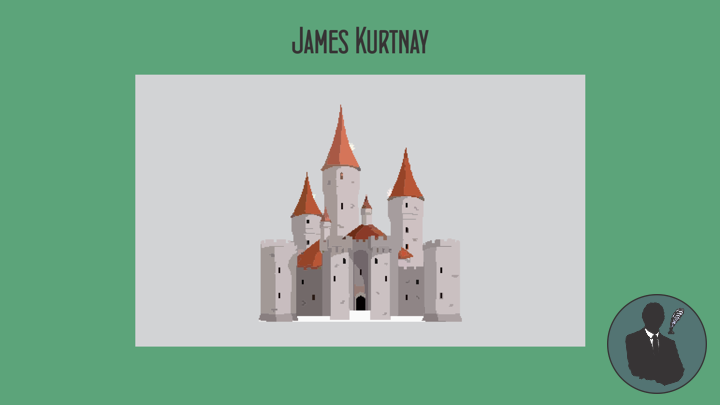——
#LudgerBedardConsultingPrivateDetective #LudgerBedard #JamesKurtnay #Distillery #Laboratory #Alchemy #Detective #Adventurer #Occult #Paranormal #Magic #Alchemy #3DAnimation
——
——
Peter Franz Xaver Freiherr von Balduin
Scientific research has proven that all things in the universe, including us, are composed of electrical, and magnetic energy alongside many other forms of energy such as gravity, and radio waves. Additionally, research has delved into understanding consciousness and has shown that there is more beyond our usual awareness – beyond what we can see with our eyes.
We are living energy fields. Our physical bodies are composed of energy producing particles, each of which is in constant motion or are vibrating. For example, our heartbeat, breathing rates, and circadian rhythms are examples of physiological energy we can feel and measure.
There are a multitude of levels of consciousness and awareness which vibrate, but there are three main levels. Ludger and James in state of contracted awareness. We are controlled by our ego conditioning and believe that the conditioned thoughts, emotions, behaviors, and patterns are what we are and that the outside world is the only true reality. We feel small, isolated and separated from the world. In this state of expanded awareness level, what appeared to be threatening or a barrier are actually opportunities. We understand that everything that seems like an obstacle has a clear purpose as lessons. We can see the beauty in most things and the blessings in life. There are state of pure awareness, there is just what is and we accept what is. We feel the wholeness and unity within creation. One knows that all is the flow of the spiritual energy and creative force and consciousness filled with an abundance of all possibilities.
Ludger and James and practitioners of various esoteric forms of spirituality refer to a variety of experiences and phenomena as being due to “Energy” or “Force” that measurement from the scientific form of energy. Ludger and James has created numerous clones of themselves, intended to succeed him successively, in the event of violent death, through a conservation and regeneration device called the duplicator machine.
Human and pig cloning. The artificial cloning of organisms, sometimes known as reproductive cloning, is often accomplished via somatic-cell nuclear transfer human and pig, a cloning method in which a viable embryo is created from a somatic cell and an egg cell. The process is applied to fertilized human and pig eggs in vitro, causing them to split into identical genetic copies of the original. The artificial creation of humans and pig by a method of growing cells from a tissue or DNA sample, the replication may be instantaneous.
Balduin
Clone: 1664 (Clonal Colony Duplicator Machine: 50 years)
- Physician (No)
- Mathematics (No)
- Astronomy (No)
- Physicist (No)
- Chemistry (No)
- Engineering (No)
- Electronic (No)
- Magic (No/Yes)
- Sidekick
- Funny language effects
- Etc…
Ludger Bedard and James Kurtnay
——
#LudgerBedardConsultingPrivateDetective #LudgerBedard #JamesKurtnay #Distillery #Laboratory #Alchemy #Detective #Adventurer #Occult #Paranormal #Magic #Alchemy #3DAnimation
——
——
Ludger and James and quest alchemy provided a body of knowledge that ultimately led to the sciences of chemistry, metallurgy, and pharmacology. The unknown substance, also called “Tincture” or “Powder” sought by alchemists for its supposed ability to transform base metals into precious ones, especially gold and silver. Alchemists also believed that an “Elixir Of Life” could be derived from it. Inasmuch as alchemy was concerned with the perfection of the human soul, the “Philosopher’s Stone” was thought to cure illnesses, prolong life, and bring about spiritual revitalization.
Long shrouded in secrecy, alchemy is now recognized as the ancestor of modern chemistry. Alchemists were notorious for attempting to make synthetic gold, but their goals were far more ambitious: to transform and bend nature to the will of an industrious human imagination. For scientists, philosophers, and artists alike, alchemy seemed to hold the key to unlocking the secrets of creation. Alchemists’ efforts to discover the way the world is made have had an enduring impact on artistic practice and expression around the globe. Inventions born from alchemical laboratories include metal alloys for sculpture and ornament, oil paints, effects in glassmaking, and even the chemical baths of photography. The mysterious art of alchemy transformed visual culture from antiquity to the Industrial Age, and its legacy still permeates the world we make today.
Kurtnay Castle (Argyll, Scotland) and St James’s Palace (London, United Kingdom) is the alchemical laboratories. Molecular cloning is a set of experimental methods in molecular biology that are used to assemble recombinant DNA molecules and to direct their replication within host organisms. The use of the word cloning refers to the fact that the method involves the replication of one molecule to produce a population of cells with identical DNA molecules. Molecular cloning generally uses DNA sequences from two different organisms: the species that is the source of the DNA to be cloned, and the species that will serve as the living host for replication of the recombinant DNA. Molecular cloning methods are central to many contemporary areas of modern biology and medicine.
Cloning is the process of producing individual organisms with identical genomes, either by natural or artificial means. In nature, some organisms produce clones through asexual reproduction, this reproduction of an organism by itself without a mate is known as parthenogenesis. In the field of biotechnology, cloning is the process of creating cloned organisms of cells and of DNA fragments.
The artificial cloning of organisms, sometimes known as reproductive cloning, is often accomplished via somatic-cell nuclear transfer, a cloning method in which a viable embryo is created from a somatic cell and an egg cell. Another example of artificial cloning is molecular cloning, a technique in molecular biology in which a single living cell is used to clone a large population of cells that contain identical DNA molecules.
Ludger and James travel in Vienna, Austria, in human and pig cloning the 1664.
Ludger Bedard and James Kurtnay
——
#Paranormal #DrScientist #GreyAlien #ExtrasensoryPerception #Cryptozoology #Telekinesis #Poltergeists #Ghost #UFO #Alien #Extraterrestrial
——
——
Grey Alien
Grey aliens, also referred to as Zeta Reticulans, are purported extraterrestrial beings. According 75% of all reported alien encounters in the United States describe Grey aliens, a significantly higher proportion than other countries. Such claims vary widely, but typically Greys are described as being human-like with small bodies with smooth, grey-colored skin; enlarged, hairless heads; and large, black eyes.
Greys are typically depicted as grey-skinned, diminutive humanoid beings that possess reduced forms of, or completely lack, external human body parts such as noses, ears, or sex organs. Their bodies are usually depicted as being elongated, having a small chest, and lacking in muscular definition and visible skeletal structure. Their legs are depicted as being shorter and jointed differently from humans with limbs proportionally different from a human.
Greys are depicted as having unusually large heads in proportion to their bodies with no hair on the body, and no noticeable outer ears or noses, sometimes with small openings or orifices for ears, nostrils, and mouths. In drawings, Greys are almost always shown with very large, opaque, black eyes. They are frequently described as shorter than average adult humans.
The eyes are often a focus of abduction claims, which often describe a Grey staring into the eyes of an abductee when conducting mental procedures. This staring is claimed to induce hallucinogenic states or directly provoke different emotions.
Maybe you’ve never seen any space aliens, but recent polls indicate that up to 6 percent of Americans claim to have been abducted by them. The experience doesn’t sound pleasant. The extraterrestrials are often said to take their captives to their saucers, lay them out on a table and extract sperm from the men and impregnate the women.
You know there are a couple of common explanations for these breeding experiments. One is that the aliens are in a reproductive bind on their home world: They can no longer successfully procreate and so have come to Earth to use humans as incubators to spawn alien offspring. The other is that the aliens are producing hybrid beings that will somehow help them take over our planet.
the growing number of abductee to the increase in atmospheric greenhouse gases. He doesn’t imply a cause and effect: The abduction experiment is not responsible for global warming. Rather, it’s a reaction to it. The extraterrestrials are producing hybrids that can better withstand the rigors of a toastier planet. By producing a new model of Homo Sapiens, this project would eliminate the need for difficult climate accords or elaborate geoengineering projects. It would also help the aliens themselves, who are said to be living among us, by preserving the part of their DNA that’s carried by the temperature-tolerant hybrids.
Report a Grey Alien? Have some Grey Alien footage a cell integrated camera or a movie camera or a video camera? Have some Grey Alien a picture? The Sassquatch’s Lair, www.sassquatch.org, Paranormal, Name, Email, Comment or Message, Submit…
Dr. Scientist
——
#Magic #TLBWB #HighPriest #Witchcraft #Wizard #Witch #MagicWindChime #BookOfShadows #WheelOfTheYear #MagicalHerbs #MagicalOils #Incense #Pentacle #MagicCircle #MagicSpell #Grimoire
——
——
Magic Wind Chime
Magic Wind Chime are a type of percussion instrument constructed from suspended tubes, rods, bells or other objects that are often made of metal or wood. The tubes or rods are suspended along with some type of weight or surface which the tubes or rods can strike when they or another wind-catching surface are blown by the natural movement of air outside. They are usually hung outside of a building or residence as a visual and aural garden ornament.
Ancient Roman Wind Chimes, usually made of bronze, were called tintinnabulum and were hung in gardens, courtyards, and porticoes where wind movement caused them to tinkle. Bells were believed to ward off malevolent spirits and were often combined with a phallus, which was also a symbol of good fortune and a charm against the evil eye. These additions increased its protective powers.
In India during the second century CE, and later in China, extremely large pagodas became popular with small wind bells hung at each corner; the slightest breeze caused the clapper to swing, made in bronze too, producing a melodious tinkling. It is said that these bells were originally intended to frighten away not only birds but also any lurking evil spirits. Wind bells are also hung under the corners of temple, palace and home roofs; they are not limited to pagodas.
You may have come across several Magic Wind Chime with traditional symbols. The placement of such Magic Wind Chime entirely depends on the symbol used. Paying attention to the number of the rods or bells is equally important. Numbers six and eight are the most popular numbers of bells or rods in a Magic Wind Chime to attract positive energy. For those looking to suppress negative energy, using a Magic Wind Chime with five rods is recommended. While you can place Magic Wind Chime anywhere in your home, it is advisable to hang these in the direction of wind-flow to increase the effect.
Magic Wind Chime are known to bring in positive energy at home. If the entrance of your home is in the North-West zone, hanging a white Magic Wind Chime can bring in a lot of positive energy. Magic Wind Chime were, and still are, used to scare away evil spirits and hung in doorways and windows to dissuade bad luck from entering a home. The sound of Magic Wind Chime blowing in the wind has the ability to reduce stress and promote relaxation and calmness. Their sounds are considered to have a healing effect on body and mind. They relieve fatigue and encourage listening, creativity and upbeat feelings.
The tones that reverberate through the Magic Wind Chime are believed to unblock emotional stress and bring a feeling of inner peace and conscious awareness. Listening to Magic Wind Chime also creates a sense of balance in one’s life. Magic Wind Chime were used to detect early, minor changes in wind speeds that signaled oncoming storms.
Follow Us
Languages Spoken and Written: English, French and Spanish.
eMail: lostbeardedwhite@sassquatch.org
Facebook: https://www.facebook.com/neosteam.labs.9/
YouTube: https://www.youtube.com/@thesass2063
Twitter: https://twitter.com/labs_steam
Pinterest: https://www.pinterest.com/NeoSteamLabs/
Instagram: https://www.instagram.com/luc.paquin/
The Lost Bearded White Brother
——
#LucPaquin #Spirituality #Philosophy #Pathos #WorkLifeBalance
——
——
Pathos
Pathos is a Greek word meaning “Suffering” that has long been used to relay feelings of sadness or strong emotion. It was adopted into the English language in the 16th century to describe a quality that stirs the emotions, often produced by a real-life tragedy or moving music or speech.
Pathos became the foundation for many other English words.
- Empathy: The ability to understand and feel the emotions of others.
- Pathology: The study of disease, which can surely cause suffering.
- Pathetic: Something that causes others to feel pity.
- Sympathy: A shared feeling of sadness.
- Sociopath: Causing harm to society.
- Psychopath: Suffering in the mind.
We see Pathos in everyday life through rhetoric. Whether it’s family, friends or advertisers, people are constantly trying to persuade you of something by appealing to your emotions. However, you can also find Pathos in formal arguments, including famous speeches and political addresses.
Whenever someone tries to make you feel bad enough to do something, they’re using Pathos as a rhetorical tool. They can also use Pathos to explain how happy they would feel if you helped them out, or how hard it will be for them if you don’t.
If a political speech has ever made you feel inspired, angry or upset, it’s used Pathos correctly. Politicians and activists rely on appealing to their audience’s feelings to make them feel a certain way and to persuade them to do something.
Pathos is persuasive technique that try to convince an audience through emotions. Pathos advertisement techniques appeal to the senses, memory, nostalgia, or shared experience. Pathos examples pull at the heartstrings and make the audience feel. A quick way to appeal to a viewer’s emotions? A cute animal. A devastated family. A love story. Overcoming great odds.
Luc Paquin
——
#LudgerBedardConsultingPrivateDetective #LudgerBedard #JamesKurtnay #Distillery #Laboratory #Alchemy #Detective #Adventurer #Occult #Paranormal #Magic #Alchemy #3DAnimation
——
——
London 1590s
Europe in the 1590s was on the cusp of great change. In the latter half of the decade, a series of treaties finally ended religious warfare that had plagued France, the Low Countries, England, and Spain for decades. In England, an aging, childless queen fanned the anxieties of her councilors and her people, as they wondered who would lead them next. Amongst European powers, like the Netherlands, England, Spain, and Portugal, commercial competition fueled a nascent proto-industrial, globalized economy. As each decade sees its regressions and advancements, glories and unanticipated strife, the sixteenth century came to a close at the front steps of the modern world.
Early modern London was an expanding metropolis filled with diverse life, from courtiers, merchants and artisans to prostitutes, beggars and cutpurses. Its populace of roughly 100,000 people included royalty, nobility, merchants, artisans, laborers, actors, beggars, thieves, and spies, as well as refugees from political and religious persecution on the continent. England’s budding economy, merchants from the Netherlands, Belgium, Germany, and even further afield set up shop in London. As a result, Londoners would hear a variety of accents and languages as they strolled about the city, a chorus of voices from across Europe and from all walks of life.
Though royalty, the court, and aristocrats may have been the most visible members of London society, a large portion of early modern London’s population worked for a living. The city’s tradesmen, artificers, merchants and manufacturers may claim much of the credit for London’s growth. Technological advances made it possible to churn out pamphlets, sermons, plays, poems, proclamations, diatribes, and jeremiads at a tremendous rate. Booksellers took these varied materials and made them available to patrons from across London, nobility, wealthy bourgeois, artisans and even the literate poor.
Although anyone who had some level of trade, craft, or artisanal skill could make a life in London, one obstacle they faced was the guild system, a holdover from a medieval mode of organizing and regulating labour. Guilds had provided valuable social and commercial structure, establishing hierarchies, from apprentice to master, based on experience and skill level. They also provided a means of excluding undesirable members. If for some reason a London tradesman fell into disfavour in a guild, he could be censured or even expelled. Such exclusion could have drastic consequences, plunging the hapless tradesman into poverty – which, in London, was a serious predicament. Early modern London was a bad place to be poor.
Ludger Bedard
——
#Paranormal #DrScientist #Clairvoyance #ExtrasensoryPerception #Cryptozoology #Telekinesis #Poltergeists #Ghost #UFO #Alien #Extraterrestrial
——
——
Clairvoyance
Clairvoyance is the claimed psychic ability to gain information about an object, person, location, or physical event through extrasensory perception. Any person who is claimed to have such ability is said to be a Clairvoyant “One Who Sees Clearly”.
Pertaining to the ability of clear-sightedness, Clairvoyance refers to the paranormal ability to see persons and events that are distant in time or space. It can be divided into roughly three classes: precognition, the ability to perceive or predict future events, retrocognition, the ability to see past events, and remote viewing, the perception of contemporary events happening outside the range of normal perception.
Ever hear of people suddenly “Seeing” the solution to a problem when they’re relaxing and not actively engaging their minds? For instance, you’re taking a shower and you have a sudden insight into solving a problem at work. The same kind of information might also come to you while you’re meditating or doing yoga. Studies have shown that these practices seem to change our brain-wave activity—often causing our frontal lobe to quiet down. But in my experience, these activities also seem to “Open” people who are psychic even more. Psychic abilities can often sit quietly, then suddenly emerge when we’re not focused on them.
In several religions, stories of certain individuals being able to see things far removed from their immediate sensory perception are commonplace, especially within pagan religions where Oracles were used. Prophecy often involved some degree of Clairvoyance, especially when future events were predicted. This ability has sometimes been attributed to a higher power rather than to the person performing it.
The key is utilizing the four main avenues our intuition uses to communicate with us, known in psychic circles as the “Four Clairs”: Clairaudience (Hearing Voices), Clairvoyance (Seeing Images), Clairsentience (Recognizing Feelings), and Claircognizance (Knowing).
What if someone could look at a photograph and diagnose a person’s body ailments? What if you could tell the past, present and future of a person just by one look? Indian yogis have been known to perform supernatural feats and in what we’re showing you is unprecedented. In a unique event, a Yogi went to the Indian Medical Association in Mumbai and reportedly demonstrated the science of Clairvoyance by diagnosing several patients accurately just by looking at their photographs, in front of a packed audience of doctors. The patients were anonymous, yet the diagnosis was reportedly accurate and instant, and no one could medically explain how it was done.
Report a Clairvoyance? Have some Clairvoyance footage a cell integrated camera or a movie camera or a video camera? Have some Clairvoyance a picture? The Sassquatch’s Lair, www.sassquatch.org, Paranormal, Name, Email, Comment or Message, Submit…
Dr. Scientist
——
#Magic #TLBWB #HighPriest #Witchcraft #Wizard #Witch #BurnerSmudgeSage #BookOfShadows #WheelOfTheYear #MagicalHerbs #MagicalOils #Incense #Pentacle #MagicCircle #MagicSpell #Grimoire
——
——
Burner Smudge Sage
Smudging encourages us to stop, slow down, and become mindful of ourselves. When we smudge, we can connect and become grounded. Smudging can help us feel calm and safe and allows us to let go of negative feelings and thoughts. The term has been used to refer to the Smudging ceremonies of a wide variety of Indigenous peoples, although not all Indigenous peoples refer to the act as Smudging. During these ceremonies, sacred herbs and medicines are burned for cleansing. Many other cultures around the world share similar rituals.
Burning Smudge Sage, also known as cleansing is an ancient spiritual ritual. Certain types of sage have antimicrobial properties, to improve your overall well-being, and may provide additional benefits. It may be purifying this means they keep infectious bacteria, viruses, and fungi at bay. Smudge Sage Burning is thought to release negative ions.
Burning Smudge Sage has long been used to connect to the spiritual realm or enhance intuition. For healers and laypeople in traditional cultures, Burning Smudge Sage is used to achieve a healing state, or to solve or reflect upon spiritual dilemmas. Research shows that thujone is mildly psychoactive. It’s actually found in many plants used in cultural spiritual rituals to enhance intuition.
Burning Smudge Sage may also be used as a ritual tool to rid yourself, or your space, of negativity. This includes past traumas, bad experiences, or negative energies from others. This may help you establish a positive environment for meditation or another ritual. Choosing to sit and let go of negative thoughts in a ritual like this sets your intention and dedication to self-improvement. Choosing to engage in ritual can be the beginning of your change in mindset.
It may help improve your mood, tradition suggests that Burning Smudge Sage can literally lift one’s spirits to banish negativity. If Burning Smudge Sage can lift one’s mood, it could also be a great ally against stress. Burning Smudge Sage has been traditionally used to safeguard against negativity that could interfere with sleep. In addition to dissipating negative energy, improving mood, and strengthening intuition, burning sage might improve your memory and focus. For some, this may be the best of all benefits: Sage is a lovely incense with a divine aroma, pure and simple.
Follow Us
Languages Spoken and Written: English, French and Spanish.
eMail: lostbeardedwhite@sassquatch.org
Facebook: https://www.facebook.com/neosteam.labs.9/
YouTube: https://www.youtube.com/@thesass2063
Twitter: https://twitter.com/labs_steam
Pinterest: https://www.pinterest.com/NeoSteamLabs/
Instagram: https://www.instagram.com/luc.paquin/
The Lost Bearded White Brother
——
#LucPaquin #Spirituality #Philosophy #Ethos #WorkLifeBalance
——
——
Ethos
Ethos is a Greek word meaning “Character” that is used to describe the guiding beliefs or ideals that characterize a community, nation, or ideology; and the balance between caution, and passion. The Greeks also used this word to refer to the power of music to influence emotions, behaviors, and even morals. Early Greek stories of Orpheus exhibit this idea in a compelling way. The word’s use in rhetoric is closely based on the Greek terminology used by Aristotle in his concept of the three artistic proofs or modes of persuasion. It gives credit to the speaker, or the speaker is taking credit. In modern usage, Ethos denotes the disposition, character, or fundamental values peculiar to a specific person, people, corporation, culture, or movement. In Rhetoric, Aristotle establishes three primary modes of argument: Ethos, Logos, and Pathos.
Aristotle is credited with developing the basics of a system of rhetoric that “Thereafter Served As The Touchstone” of the discipline, influencing the development of rhetorical theory from ancient through modern times. Like the other works of Aristotle that have survived from antiquity, the Rhetoric seems not to have been intended for publication, being instead a collection of his students’ notes in response to his lectures. This dialogue offered Aristotle, first a student and then a teacher at Plato’s Academy, a more positive starting point for the development of rhetoric as an art worthy of systematic, scientific study. In contrast to the emotional rhetoric and poetry of the sophists was a type of rhetoric grounded in philosophy and the pursuit of enlightenment.
In a sense, Ethos does not belong to the speaker but to the audience and it’s appealing to the audience’s emotions. Thus, it is the audience that determines whether a speaker is a high or a low Ethos speaker. Violations of Ethos include:
- The speaker has a direct interest in the outcome of the debate.
- The speaker has a vested interest or ulterior motive in the outcome of the debate.
- The speaker has no expertise.
This is broadly the function of Ethos in commercials.
- When an esteemed public figure endorses a product, it validates it to the end consumer.
- An Ethos advertisement plays off the consumer’s respect for a given spokesperson.
- Through that respect, the spokesperson appears convincing, authoritative and trustworthy enough to listen to. Of the types of persuasive techniques in advertising, Ethos is best used to unlock trust.
Luc Paquin
——
#LudgerBedardConsultingPrivateDetective #LudgerBedard #JamesKurtnay #Distillery #Laboratory #Alchemy #Detective #Adventurer #Occult #Paranormal #Magic #Alchemy #3DAnimation
——
——
James Kurtnay
The area around Port Ellen has a variety of archaeological sites covering the Neolithic, Bronze and Iron Age periods. There are standing stones at Kilbride, a fort at Borraichill Mor, several chambered cairns, and a chapel at Cill Tobar Lasrach.
Lord of the Isles is a title of Scottish nobility with historical roots that go back beyond the Kingdom of Scotland. It began with Somerled in the 12th century and thereafter the title was held by a series of his descendants, the Norse-Gaelic rulers of the Isle of Man and Argyll and the islands of Scotland in the Middle Ages. They wielded sea-power with fleets of galleys. Although they were, at times, nominal vassals of the kings of Norway, Ireland, or Scotland, the island chiefs remained functionally independent for many centuries. Their territory included much of Argyll, the Isles of Arran, Bute, Islay, the Isle of Man, Hebrides, Knoydart, Ardnamurchan, and the Kintyre peninsula. At their height they were the greatest landowners and most powerful lords after the kings of England and Scotland.
In their maritime domain the Lords of the Isles used galleys for both warfare and transport. Though they undoubtedly acquired longships from the Norse they defeated, the ships of the Dalriadic Scots and Irish and Islesmen predate the Viking longships and knarrs, clinker-built, though each had a square sail and rows of oars. In the mid 12th century, Somerled, the first Lord of the Isles, developed the stern rudder that gave the galleys and longships sailed by the Islesmen greater maneuverability over the steering oar used by the Vikings. These ships took part in sea battles and attacked castles or hill forts almost always located close to the sea. The Lordship specified the feudal dues of its subjects in terms of numbers and sizes of the galleys each area had to provide in service to their Lord.
Father in Robert Kurtnay, 2th Lord Kurtnay (1517-1571). Kurtnay Castle, is located on the south side of Islay, in Argyll, Scotland, on the shore of Lagavulin Bay, from Port Ellen. The castle was once a naval base of the Lord of the Isles, chiefs of Clan Kurtnay. James Kurtnay, 3th-16th Baron Kurtnay (1561-***).
Islay single malts are the single malt Scotch whiskies made on Islay, one of the southernmost of the Inner Hebridean Islands located off the west coast of Scotland. Some sources indicate that Irish monks may have been the first to distill whisky on the island in the early 1300s. The whiskies of the distilleries along the southeastern coast of the island have a smoky character derived from peat, considered a central characteristic of the Islay malts, and ascribed both to the water from which the whisky is made and to the peating levels of the barley. Many describe this as a “Medicinal” flavour. They also possess notes of iodine, seaweed and salt.
James Kurtnay
